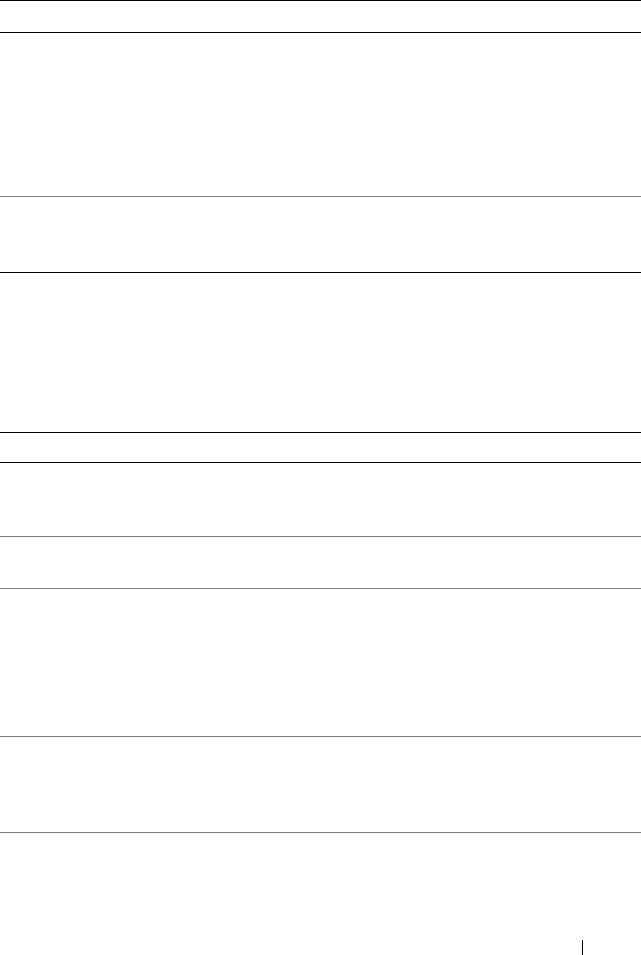Storage System Hardware Owner's Manual
Table Of Contents
- Hardware Owner’s Manual
- About Your System
- Using the System Setup Program
- Installing System Components
- Recommended Tools
- Inside the System
- Front Bezel
- Opening and Closing the System
- Hard Drives
- Replacing a Hard-Drive Carrier
- Power Supplies
- System Fans
- Cooling Shroud
- Fan Brackets
- Cable Routing
- SAS Controller Daughter Card
- Configuring the Boot Device
- Expansion Cards
- Expansion-Card Cage
- DRAC Card and Cables
- Optical Drive and Cable
- System Memory
- Activating the Integrated NIC TOE
- Processors
- System Battery
- Expansion-Card Riser Boards
- Sideplane Board
- SAS Backplane Board
- Control Panel Assembly (Service-only Procedure)
- System Board (Service-only Procedure)
- Troubleshooting Your System
- Safety First-For You and Your System
- Start-Up Routine
- Checking the Equipment
- Troubleshooting Basic I/O Functions
- Troubleshooting a NIC
- Troubleshooting a Wet System
- Troubleshooting a Damaged System
- Troubleshooting the System Battery
- Troubleshooting Power Supplies
- Troubleshooting System Cooling Problems
- Troubleshooting System Memory
- Troubleshooting an Optical Drive
- Troubleshooting an External SCSI Tape Drive
- Troubleshooting a Hard Drive
- Troubleshooting a SAS Controller Daughter Card
- Troubleshooting Expansion Cards
- Troubleshooting the Microprocessors
- Running the System Diagnostics
- Jumpers and Connectors
- Getting Help
- Glossary
- Index

Using the System Setup Program 51
Integrated Devices Screen
Table 2-5 lists the options and descriptions for the information fields that
appear on the Integrated Devices screen.
Demand-Based Power
Management
(Enabled default)
Enables or disables demand-based power management.
When enabled, the CPU Performance State tables will be
reported to the operating system; when disabled, the
CPU Performance State tables will not be reported to the
operating system. If any of the CPUs do not support
demand-based power management, the field will become
read-only, and automatically set to Disabled.
Processor X ID Displays the family and model number of each processor.
A submenu displays processor core speed, amount of level 2
cache, and number of cores.
Table 2-5. Integrated Devices Screen Options
Option Description
Integrated SAS
Controller
(Enabled default)
Enables or disables the integrated SAS controller.
Embedded SATA
(Off default)
Allows the integrated SATA controller to be set to Off or
ATA Mode.
IDE CD-ROM
Controller
(Auto default)
Enables the integrated IDE controller. When set to Auto, each
channel of the integrated IDE controller is enabled if IDE
devices are attached to the channel and the external IDE
controller is not detected.
NOTE: This CD-ROM option will not appear on this menu screen if
your system does not include this optional device.
User Accessible
USB Ports
(All Ports On
default)
Enables or disables the system’s user accessible USB ports.
Options are All Ports On, Only Back Ports On, and All Ports
Off.
Internal USB Port
(On default)
Enables or disables the system’s internal USB port. This option is
active only when User Accessible USB ports is set to All Ports On.
Table 2-4. CPU Information Screen (continued)
Option Description
Book.book Page 51 Monday, September 14, 2009 12:57 PM










